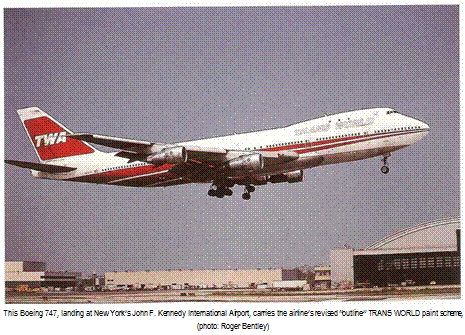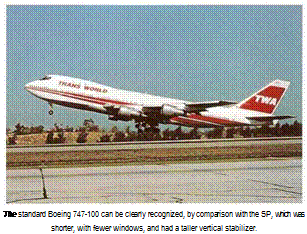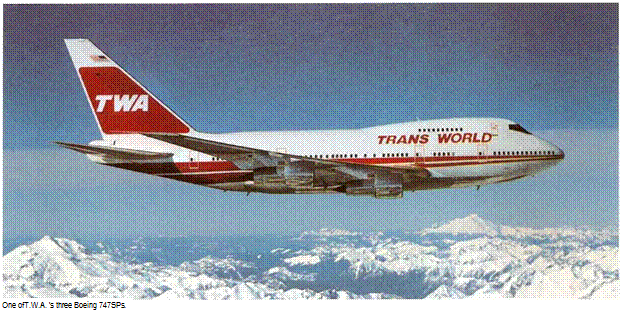Boeing 747-131
342-433 seats • 590 mph
|
|
|
Engines |
*Pratt & Whitney JT9D-3 (43,500 lb) x 4 Length |
232 feet |
|
MGT0W |
734,000 lb Span |
196 feet |
|
Range |
4,000 miles Height |
63 feet |
|
^Initially, later JT9D-7A (46,9501b) |
 The Boeing 747, called the “Jumbo Jet” from the time it first went into service in 1970, has already served the airlines for three decades, and will probably still be in front-line flagship service for for many more years yet. This will be as long as all the generations of airliners before 1970, at least from the debut of the first DC-3. Its reign covers half of the proverbial three-score years and ten—quite a lifetime. When they started service, the 747s cost $21 million each. Now, a Series -400 would cost about $140 million.
The Boeing 747, called the “Jumbo Jet” from the time it first went into service in 1970, has already served the airlines for three decades, and will probably still be in front-line flagship service for for many more years yet. This will be as long as all the generations of airliners before 1970, at least from the debut of the first DC-3. Its reign covers half of the proverbial three-score years and ten—quite a lifetime. When they started service, the 747s cost $21 million each. Now, a Series -400 would cost about $140 million.
In mixed class seating layout, it accommodates between 350 and 390 passengers; but in Japan, where a special short-haul version is used to connect the majoi centers of population, the airlines put in 530 seats, or the capacity of an average-sized London theater. Like all the trans-Atlantic jets, it makes a round-trip between Europe and the United States within 24 hours, and its productivity is thus about five times higher than that of an ocean liner such as the Queen Man. At least two of T. W.A.’s 747s were retired only after no less than 100,000 hours of flight time, a truly impressive record of aeronautical achievement.












